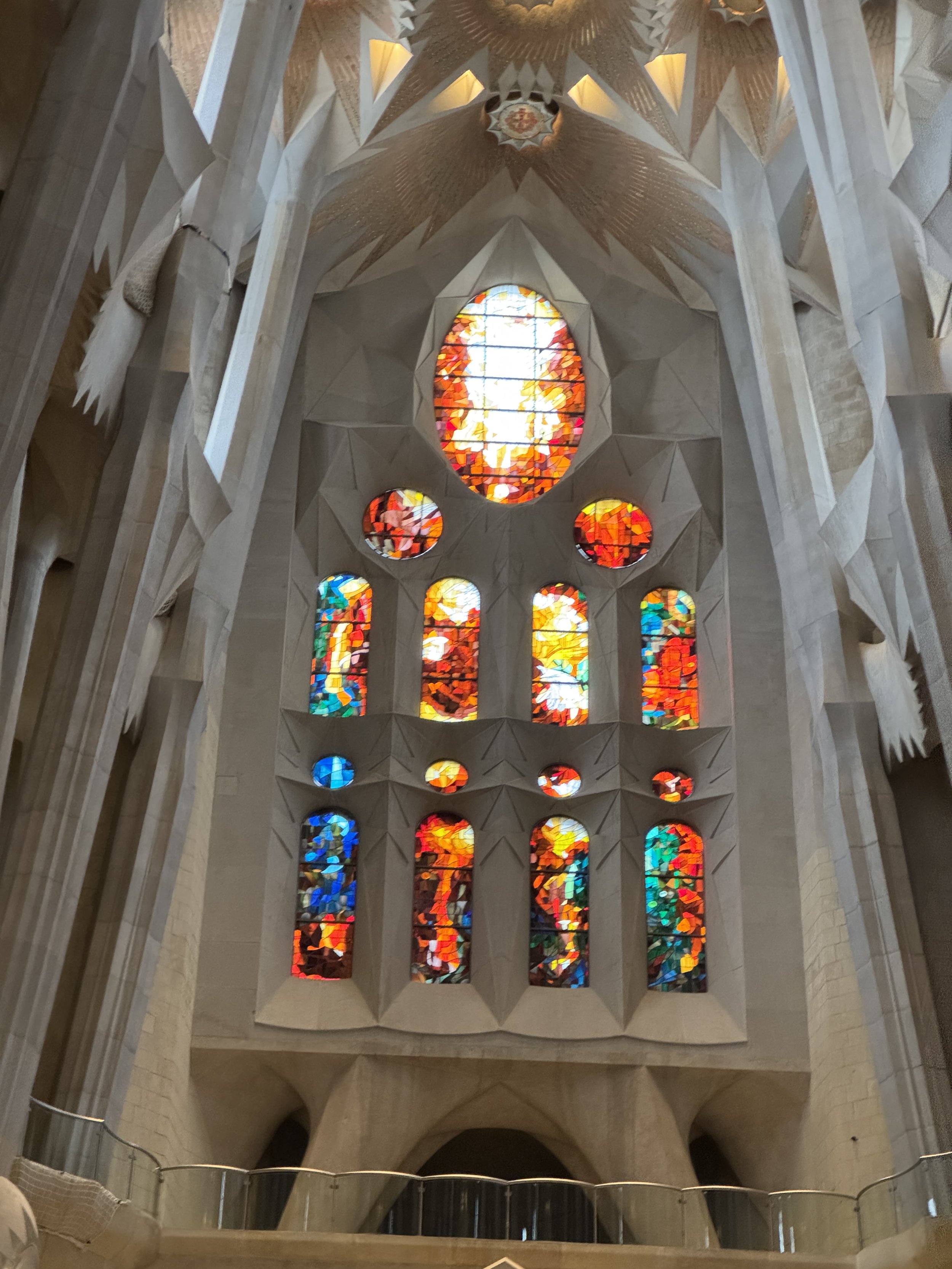Back Aboard in Barcelona
It’s been awhile, but we are finally back aboard in Barcelona. We spent the past three months traveling around the western part of the US visiting with friends and family and building up our Schengen time. I’m not exactly sure why, but we both experienced extreme jet lag upon our return this time, for several days we were waking at odd hours and dropping into exhaustion each afternoon. Some transitions are just easier than others. It didn’t help that it took a couple of days to bleed the air out of our heating system making it easy to bundle up under a blanket with a cup of tea.
This is our third visit to Barcelona. We had tried, on both our previous visits, to tour Sagrada Familia but each time were too late to get tickets that fit into our limited timeframe. This time, as we knew exactly when we would be flying in, we secured tickets months in advance and finally made this tour a reality.
Sagrada Familia is a Roman Catholic basilica designed by architect Antoni Gaudí. The most visited monument in Spain, when completed it will be the tallest Christian church in the world. Construction actually began in 1882 under the architect Francisco de Paula del Villar. A year later he resigned and Gaudí took over as chief architect, completely transforming the project into his own style. Though it has long been called the “unfinished basilica” it is still under construction and is finally on track for completion (a mere ~150 years later). The reasons behind the delays lie mainly in the fact the project has relied solely on private donations (now including ticket sales). More recently, advancements in technology have sped construction along and in 2010 the project passed the midway point. The building’s greatest challenge remains the construction of ten more spires, each symbolizing an important biblical figure in the New Testament.
Gaudí was a prodigious expert in architecture. His work is known worldwide for his originality, creativity and ability to innovate. He moved away from classical buildings and created bizarre modern ones that included ornamentation depicting colorful nature forms as well as whimsical elements made from a variety of materials such as broken pieces of ceramics, glass and wrought iron. From the outside you see sculptures portraying biblical characters, plants as well as animals nestled into colorful spires, tall arched roofs, carved walls, and large windows.








Inside there are several columns, an altar, chapels and naves which are all illuminated by intricate geometric stained glass windows filtering an array of light that is quite ethereal. Inspired by nature, it resembles a forest with a set of tree-like columns forked into various sized branches that support a structure of interlaced vaults. Gaudí inclined the columns and gave them a helical shape, branching them into several smaller columns to better support the structure. In this way he achieved a method of supporting the weight of the vaults without the need for external buttresses - which was the architectural norm of the time. The entire building inspires awe at the sheer ambition to create such a grandiose structure, it is testament to the genius of Antoni Gaudí.








Notwithstanding this long, full day of sightseeing and exploring we were slowly getting ourselves ready to resume cruising. The next few days were spent stowing things, turning on all the equipment, confirming various systems were functioning properly and doing the provisioning. We did manage to get off the boat each day, though often not until sunset, to walk the breakwater or take a bike ride and stretch our legs.











It’s been a very productive few days. Now we just have to wait for a good weather window to cast off. Until next time…




